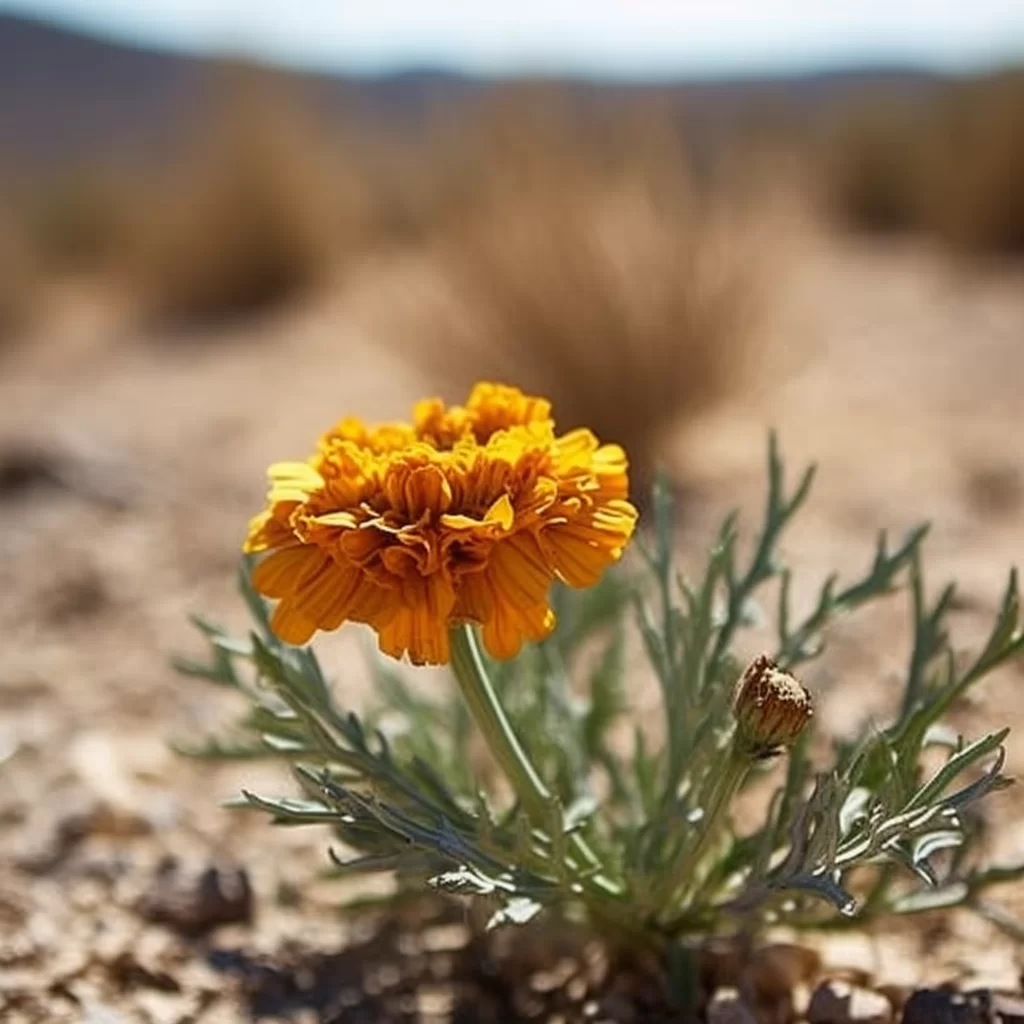Story of Day :
Contents
The Desert Marigold Plant: A Complete Guide and Care Tips
Gardening enthusiasts often turn to desert plants for their low-maintenance nature and unique beauty.
One such plant that has gained popularity in recent years is the desert marigold.
This bright yellow flower brings life to arid landscapes and adds a pop of color to any garden.
In this article, we’ll provide a complete guide on how to care for this resilient plant.
Introduction to Desert Marigolds
The scientific name for desert marigold is Baileya multiradiata, which comes from the sunflower family (Asteraceae).
These wildflowers are native to the southwestern United States and Mexico, where they can be found in deserts, grasslands, and rocky areas.
Desert marigolds typically bloom from March through November, with peak flowering occurring in the spring months.
The bright yellow flowers have a diameter of two inches or more and grow on stems that range from 10-18 inches tall.

Planting Desert Marigolds
- Location: As their name suggests, these plants thrive best in hot climates with plenty of sunlight exposure.
When planting desert marigolds in your garden or landscape area, choose a spot that receives full sun exposure throughout most of the day.
- Soil: These wildflowers prefer well-draining soil that is slightly alkaline with a pH level between 7-8.
- Irrigation: While desert marigolds are drought-tolerant plants that don’t require much water after establishment period .
It’s important not overwater as it may lead root rotting.
- Mulching:: Mulch helps retain moisture while also providing insulation to the soil around the plant.
- Propagation: Desert marigolds can be propagated in several ways: by seed, cutting, stem division or layering but propagation from seeds is easy and ideal..
Caring for Desert Marigolds

- Fertilization: desert marigold plant generally don’t need fertilizer as they are desert plants but if planting in pots that may require nutrients to i.e feed once a month with half strength succulent fertilizers.
- Pests and Diseases: These wildflowers are relatively disease-free.
Few pests attack these plants like spider mites but you can spray them with neem oil or insecticidal soap if needed.
- Pruning: If your desert marigold plant starts looking lanky or overgrown then prune back about a third of its size.
Conclusion
The desert marigold is an excellent choice for gardeners looking to add color to their landscape without investing too much time or energy into maintenance.
By following our guide on planting, caring and propagating this resilient flower , you’ll quickly see why this wildflower has become so popular among garden enthusiasts.

If you’re considering adding some warmth and bright color to your garden, try incorporating desert marigolds into your next landscaping project.
With proper care and attention,your very own yellow patches will soon emerge making memories for years.